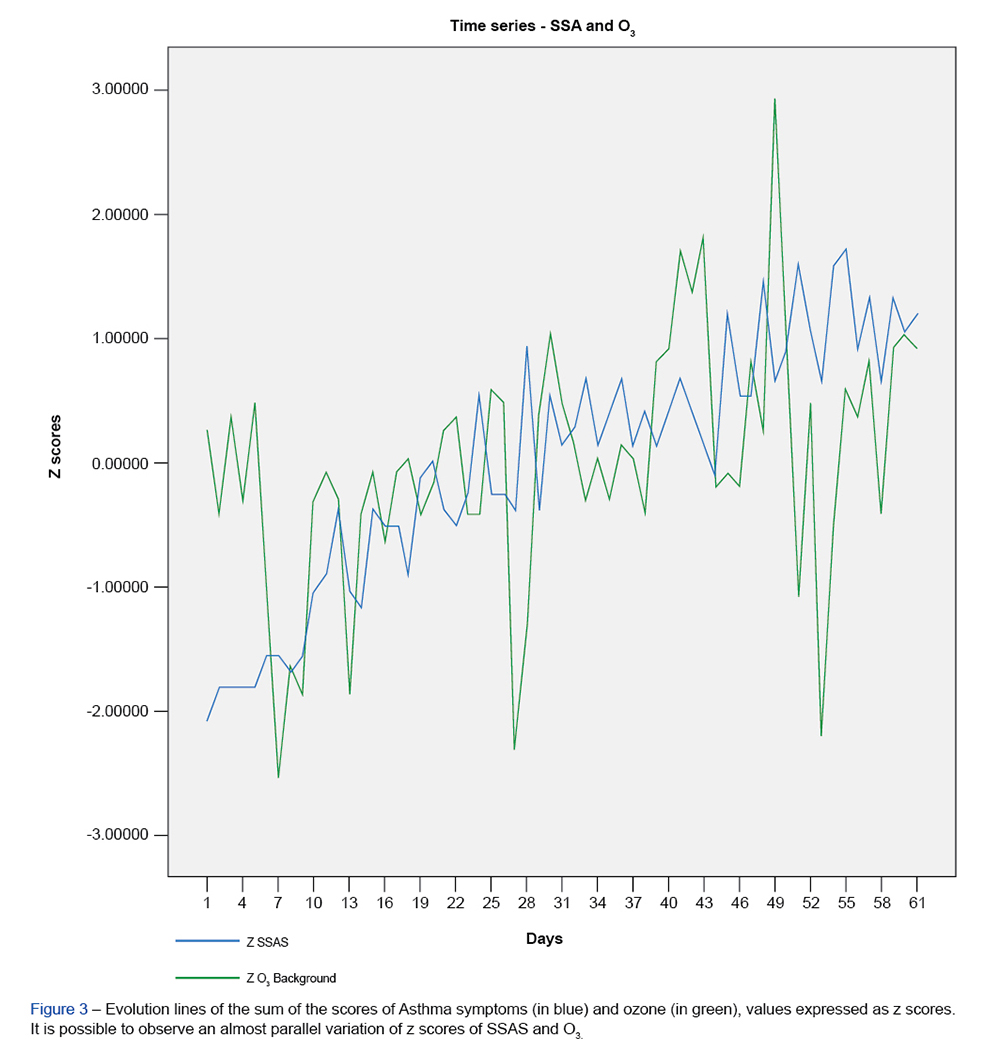SOCIAL MEDIA
Portuguese Medical Association's Scientific Journal

Introduction: The impact of air pollution on respiratory diseases, particularly in asthma, has been the subject of several studies. The impact of pollution on the daily symptoms of patients with asthma has been less studied. The aim of this study is to assess the association between the intensity of asthma symptoms and the variation of pollution levels.
Material and Methods: Patients with a diagnosis of asthma were instructed to record the intensity of their respiratory symptoms daily, expressed on a scale from 0 to 5, in the months of March and April 2018. The website of the Portuguese Environment Agency was consulted in order to obtain the daily levels of pollutants measured by the two local monitoring stations during the same period of time. Data was analyzed using a temporal causal model to study the association between pollutant levels – particulate matter, ozone, nitrogen dioxide and carbon monoxide – and the intensity of respiratory symptoms.
Results: From the 135 schedules delivered, 35 were correctly filled out and returned. The patient median age was 47.0 years, 18 being females. The best statistical model obtained identified ozone as the most relevant ‘Granger cause’ of asthma symptoms. Particulate matter, carbon monoxide and nitrogen also appeared as lower impact factors. The quality of the model was expressed by an R2 of 0.92. The correlation between ozone values and asthma symptoms was more significant after five days. For the other identified factors there was a lag of four to five days.
Discussion: Our results support the existence of a daily variation of asthma symptoms that is associated with the pollution levels, even if these are within acceptable limits according to national and international standards. Regretfully, the small number of participants was a limitation in term of the conclusions that could be drawn and did not allow the analysis of clinical or other factors that are potentially involved.
Conclusion: In the place and period studied the air pollutants behaved as factors of variation in the intensity of asthma symptoms. The ozone level was the best predictive factor of symptom variation. Levels of particulate matter, carbon monoxide and nitrogen were identified as secondary markers. The time lag between the variables with the best correlation suggests there could be a delayed effect of pollutants on respiratory symptoms.